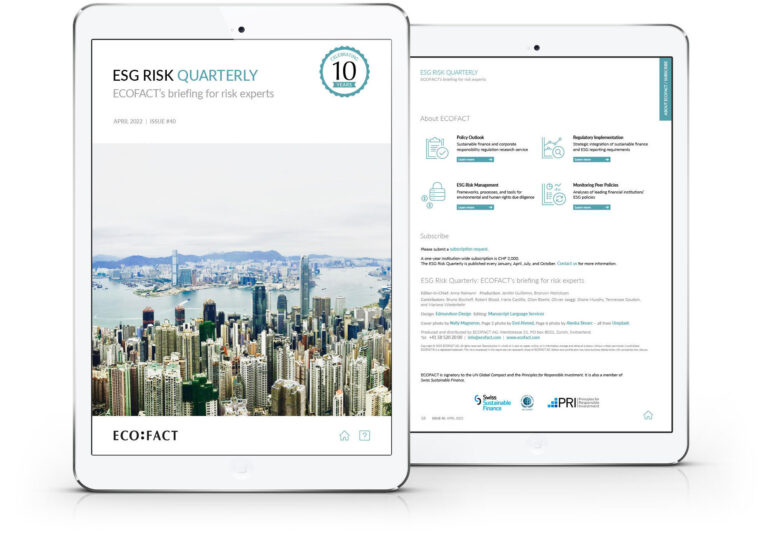The OECD Specifies RBC Due Diligence Requirements
Although this blog post is about asset management, its key message applies to any area of business: due diligence for responsible business conduct (RBC) is a requirement.
There is a widespread misconception about the role of due diligence for RBC when making investment decisions. In asset management, RBC is often seen as one of several potential ESG strategies, such as best-in-class investment or impact investment.
However, none of these alternative ESG strategies ensure compliance with the due diligence guidelines of the OECD.[1] For investors, due diligence has a specific meaning under the OECD Guidelines[2]: „a process for identifying, preventing, mitigating and accounting for so-called adverse impacts“ related to „human and labor rights, the environment, and corruption in their investment portfolios“. Due diligence „should be continuous and ongoing, and aimed at avoiding and responding to risks related to issues covered in the OECD Guidelines.“
As an investor OECD guidance expects you to a) implement due diligence for RBC regardless of your ESG approach, even if you don’t have an ESG strategy at all; b) address adverse impacts, which requires you to go beyond mitigating risks for your portfolios, c) implement an appropriate system within your institution[3] to identify, prevent, mitigate and account for such impacts through any business activity that has the potential to cause, contribute to or be linked to such impacts.
The first RBC guidance produced by the OECD for the financial sector addresses institutional investors (see above). A second guide will focus on corporate lending and corporate finance. It is currently being worked on and the first expert working session will take place on March 13, 2018 in NYC.[4]
While such OECD guidance is not legally binding, it provides an important reference point. The more granular guidance which is created today will make it easier for OECD’s National Contact Points (NCP) to assess the business practices of financial institutions[5] and might also be used by regulators and courts as a benchmark for expected business practices in the future. As in other areas, non-compliance with OECD guidance presents significant risks and might be seen as a deliberate decision. In the context of such guidance, both actions and omissions are considered as “activities”.
Aligning investment portfolios with OECD standards is not just about unlocking long-term value, it is a necessary process to protect yourself from inevitable risks.
 All posts
All posts Contact
Contact



